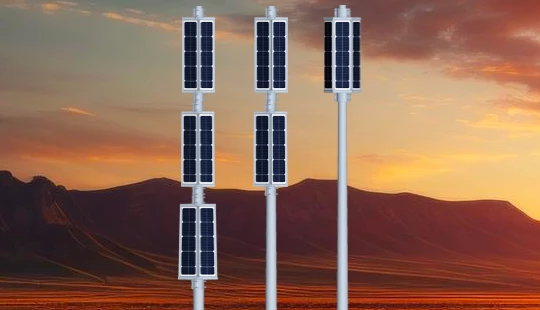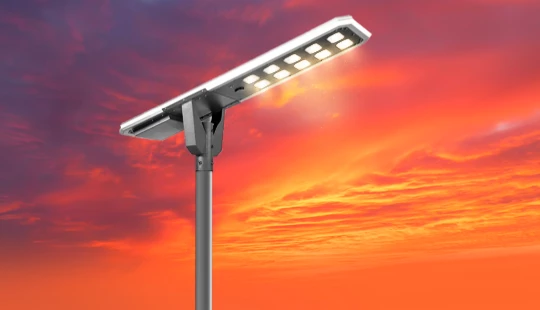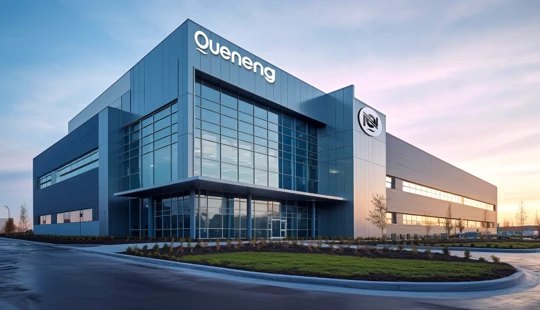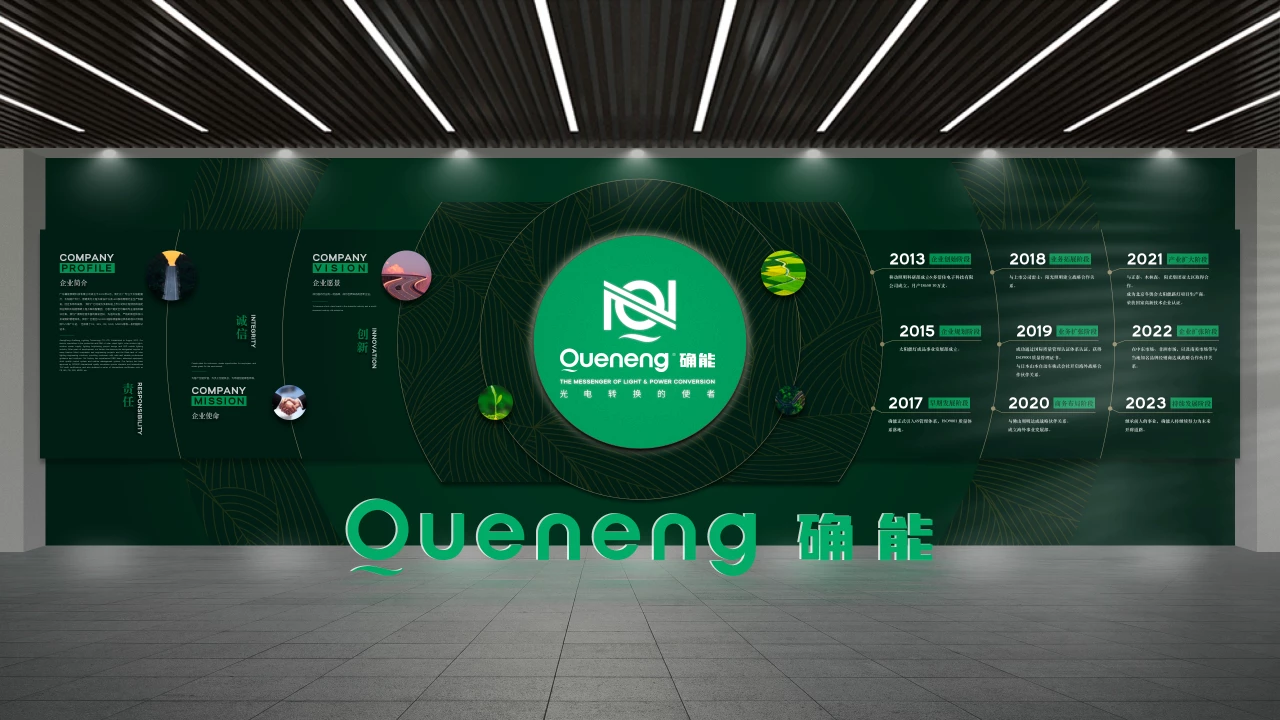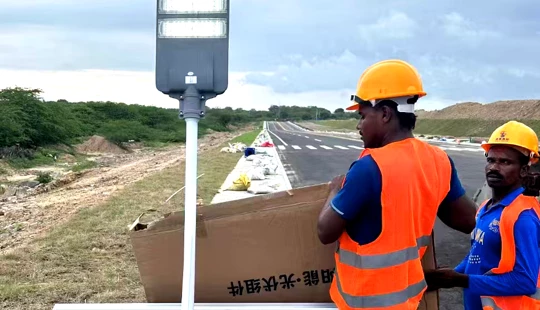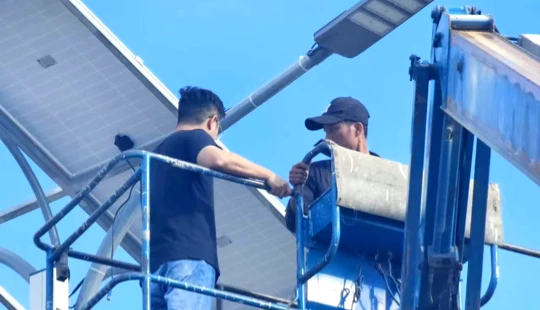Custom custom solar light battery capacity configuration guide Manufacturers and Suppliers
In the burgeoning landscape of sustainable infrastructure, solar lighting stands as a beacon of efficiency and environmental responsibility. From sprawling urban streetlights to serene garden illuminations and robust industrial setups, solar lights offer an unparalleled blend of energy independence and cost-effectiveness. However, the true performance and longevity of any solar lighting system hinge critically on one often-underestimated component: its battery. Simply put, a perfectly sized battery ensures consistent illumination, even during extended periods of low sunlight. This comprehensive guide, brought to you by GuangDong Queneng Lighting Technology Co., Ltd., a leader in solar lighting solutions since 2013, delves into the intricacies of custom solar light battery capacity configuration guide. We aim to empower you with the knowledge to understand why tailored battery solutions are not just a luxury but a necessity for optimal solar lighting performance, ensuring your investment delivers reliable, enduring light.
Understanding Custom Solar Light Battery Capacity: A Foundation for Reliable Illumination
Why one-size-fits-all simply doesn't apply to solar lighting, especially when it comes to battery capacity. Every solar lighting project is unique, influenced by geographical location, specific lighting requirements, operational hours, and desired autonomy. A solar street light in a northern climate will require a different battery configuration than one in a tropical region, due to variations in peak sun hours. Similarly, a security light operating all night demands a larger capacity than a decorative garden light that only illuminates for a few hours. Improper battery sizing can lead to significant issues, including insufficient lighting, premature battery degradation, or even system failure, undermining the entire investment. This is precisely why a custom solar light battery capacity configuration guide is indispensable. It ensures that the battery precisely matches the system's energy demands and environmental conditions, guaranteeing reliable, consistent performance and maximizing the lifespan of the entire solar lighting unit. Partnering with custom solar light manufacturers who understand this nuance is key to project success.
Key Factors Influencing Solar Light Battery Sizing
Accurate battery sizing is a meticulous process that considers several critical parameters. Firstly, the LED wattage of the light fixture directly dictates the energy consumption. A higher wattage LED will naturally consume more power, necessitating a larger battery. Secondly, the desired hours of operation per night significantly impact the daily energy draw. A solar light designed to operate dusk-to-dawn will require substantially more battery capacity than one set to illuminate for only 4-6 hours. Thirdly, system voltage (typically 12V or 24V for solar lights) plays a role in determining the amp-hour (Ah) rating needed for a given watt-hour (Wh) capacity. Finally, environmental factors, particularly ambient temperature, can affect battery performance and capacity. Colder temperatures can reduce battery efficiency and available capacity, requiring a slight oversizing in certain climates. Professional solar light battery sizing accounts for all these variables to design a robust and efficient system.
The Role of Autonomy Days in Battery Configuration
One of the most crucial factors in any custom solar light battery capacity configuration guide is days of autonomy. This refers to the number of consecutive cloudy or rainy days during which the solar light system can continue to operate reliably without any sunshine for recharging. For critical applications like solar street lights or security lighting, a higher number of autonomy days (e.g., 3-5 days) is often required to ensure uninterrupted operation, even during prolonged periods of inclement weather. In contrast, decorative garden lights might require fewer autonomy days. Calculating autonomy involves understanding the worst-case solar insolation data for the project location and factoring in the desired reliability. A well-configured battery, providing ample autonomy, is the cornerstone of a resilient solar lighting system, preventing performance dips and ensuring peace of mind for users and project managers alike.
Choosing the Right Battery Chemistry for Your Solar Lights
The choice of battery chemistry is paramount in a custom solar light battery capacity configuration guide. Historically, lead-acid batteries (GEL or AGM) were common due to their lower initial cost. However, they suffer from a shorter cycle life (typically 500-1500 cycles), lower depth of discharge (DoD) of around 50-70% for optimal lifespan, and are heavier. In recent years, Lithium Iron Phosphate (LiFePO4) batteries have emerged as the superior choice for high-performance solar lighting applications. LiFePO4 batteries offer a significantly longer cycle life (2000-6000+ cycles), can be safely discharged to 80-90% DoD, are lighter, more compact, and perform better in a wider temperature range. While their upfront cost is higher, their extended lifespan and superior performance result in a much lower total cost of ownership (TCO) over the project's duration. For reliable and long-lasting solar street light battery solutions, LiFePO4 is increasingly the preferred standard among custom solar lighting manufacturers.
Calculating Your Solar Light Battery Needs: A Step-by-Step Guide
Precise calculation is at the heart of any effective custom solar light battery capacity configuration guide. Here’s a simplified approach:
- Calculate Daily Energy Consumption (Wh): Multiply the LED wattage (W) by the daily operating hours (h). Example: 30W LED x 10 hours = 300 Wh/day.
- Determine Total Required Energy (Wh): Multiply the daily energy consumption by the desired days of autonomy. Example: 300 Wh/day x 4 days autonomy = 1200 Wh.
- Account for System Losses & Efficiency: Batteries and charge controllers have efficiencies. A typical factor for combined efficiency and Depth of Discharge (DoD) for LiFePO4 is around 0.8 (considering 90% DoD and 90% efficiency). For lead-acid, this factor might be lower, around 0.5-0.6. Divide the total required energy by this factor. Example (LiFePO4): 1200 Wh / 0.8 = 1500 Wh usable battery capacity.
- Calculate Battery Capacity in Amp-Hours (Ah): Divide the usable battery capacity (Wh) by the system voltage (V). Example: 1500 Wh / 12V = 125 Ah.
This calculation provides a theoretical minimum. Professional engineers will apply additional safety margins and consider specific battery characteristics and temperature effects for a truly robust solar panel battery capacity design.
The Importance of Professional Solar Battery Configuration Services
While basic calculations provide a foundation, achieving optimal performance and longevity for a solar lighting engineering solutions project requires professional expertise. An experienced manufacturer or solutions provider goes beyond simple calculations. They consider nuanced factors like the maximum power point tracking (MPPT) efficiency of the charge controller, the temperature compensation for batteries, the specific charge and discharge profiles of the chosen battery type, and the long-term degradation rates. Furthermore, they can advise on the optimal integration of the battery with the solar panel and LED fixture to create a perfectly balanced system. Relying on professional custom solar light manufacturers ensures that your battery system is not merely sufficient but perfectly optimized for peak performance, maximum lifespan, and lowest total cost of ownership. This expert guidance mitigates risks and guarantees the reliability you need for large-scale projects or critical applications.
Benefits of Partnering with Experienced Custom Solar Light Manufacturers
Engaging with a reputable and experienced custom solar light manufacturer like GuangDong Queneng Lighting Technology Co., Ltd. offers a multitude of benefits for your solar lighting projects. Firstly, you gain access to a wealth of knowledge in solar lighting solutions, ensuring that every component, especially the battery, is perfectly matched to your specific needs. Secondly, these manufacturers provide high-quality, certified products (like those with CE, UL, BIS, CB, SGS, MSDS, ISO 9001 certifications that Queneng holds), guaranteeing reliability and safety. Thirdly, their R&D capabilities allow for innovation and the development of cutting-edge battery technologies that enhance performance and durability. Lastly, they offer comprehensive support from design and configuration to post-installation, acting as a true solar lighting engineering solutions think tank. This holistic approach ensures that your investment in custom solar light battery capacity configuration guide translates into a highly efficient, long-lasting, and trouble-free lighting system.
Queneng's Expertise in Custom Solar Battery Solutions
At GuangDong Queneng Lighting Technology Co., Ltd., our decade-long dedication to the solar lighting industry, beginning in 2013, has positioned us as a trusted authority in providing comprehensive custom solar light battery capacity configuration guide services. Our experienced R&D team utilizes advanced equipment and adheres to stringent quality control systems, ensuring that every battery solution we propose is meticulously engineered for optimal performance and durability. As a designated supplier for numerous famous listed companies and engineering projects, we pride ourselves on being a solar lighting engineering solutions think tank, delivering safe, reliable, and professional guidance. Our commitment to excellence is underscored by our ISO 9001 quality assurance system and international TÜV audit certifications, alongside a suite of global product certifications. When you choose Queneng, you choose a partner dedicated to delivering tailored, high-performance solar garden light battery or solar lawn light battery solutions, and extensive solar street light battery systems, ensuring your projects shine brightly for years to come.
In conclusion, the battery is the heart of any solar lighting system, and its capacity configuration is paramount to achieving reliable, long-lasting performance. Moving beyond generic solutions to embrace a custom solar light battery capacity configuration guide is not merely an option but a strategic imperative for any successful solar lighting project. By carefully considering factors such as LED wattage, operating hours, autonomy days, and selecting the appropriate battery chemistry, you can ensure your solar lights deliver consistent illumination, maximizing your return on investment. Partnering with a seasoned expert and custom solar light manufacturer like GuangDong Queneng Lighting Technology Co., Ltd. provides the critical expertise, advanced technology, and quality assurance needed to navigate these complexities. Our proven track record, rigorous certifications, and commitment to innovative solar lighting solutions guarantee that your custom battery system is perfectly optimized, securing reliable and sustainable illumination for your present and future needs. Contact us today to discuss your specific project requirements and let our experts illuminate your path to success.
Frequently Asked Questions About Custom Solar Light Battery Capacity
What is the typical lifespan of a solar light battery?The lifespan largely depends on the battery chemistry and usage. Lead-acid batteries generally last 3-5 years, while high-quality Lithium Iron Phosphate (LiFePO4) batteries can last 8-15 years or even longer, depending on the number of charge/discharge cycles and operating conditions.
Why is custom battery capacity configuration important for solar lights?Custom configuration ensures the battery is precisely matched to the specific energy demands of the light, the local solar irradiance, and desired autonomy days. This prevents under-sizing (leading to dimming or failure) and over-sizing (leading to unnecessary cost and potential inefficiency), maximizing performance and lifespan.
Can I use any battery for my solar light?No. Solar lights require deep-cycle batteries designed for repeated charge and discharge cycles, unlike car batteries. Also, the voltage and capacity must match the solar panel and LED fixture specifications. LiFePO4 batteries are typically recommended for their superior cycle life and performance.
How do environmental factors affect solar light battery capacity?Extreme temperatures, particularly very cold conditions, can reduce battery efficiency and available capacity. Reputable manufacturers account for these environmental factors in their configuration, often by slightly oversizing or using batteries with better low-temperature performance characteristics.
What certifications should I look for in a solar light battery manufacturer?Look for manufacturers with ISO 9001 for quality management, and product-specific certifications like CE, UL, BIS, CB, SGS, and MSDS. These indicate adherence to international safety and quality standards, ensuring reliable and safe products.
Is it more cost-effective to buy a larger battery than strictly necessary?While some safety margin is good, excessive oversizing can be unnecessarily expensive and might not significantly improve performance beyond a certain point. It's about optimal sizing – just right for your specific needs – which is where custom configuration expertise comes in. A professional manufacturer will balance performance, cost, and longevity.

Have more questions about our products or services?
The latest hot news you might like

Discover how solar panels power street lights, exploring the technology behind solar energy conversion, storage systems, and how solar-powered street lights are revolutionizing urban and rural lighting solutions.

Learn how AC Solar Hybrid Street Lights work, their advantages, disadvantages, system behavior in low-sunlight conditions, and why hybrid technology is ideal for regions with unstable sunlight.

Municipalities around the world are increasingly adopting solar-powered streetlights as part of their urban development strategies. Rising energy costs, the need for sustainable infrastructure, and government green initiatives are driving cities to switch from traditional street lighting to advanced LED solar streetlights.
Queneng Lighting provides municipalities with cost-effective, energy-efficient, and durable solar lighting solutions, ensuring safe and sustainable public spaces.
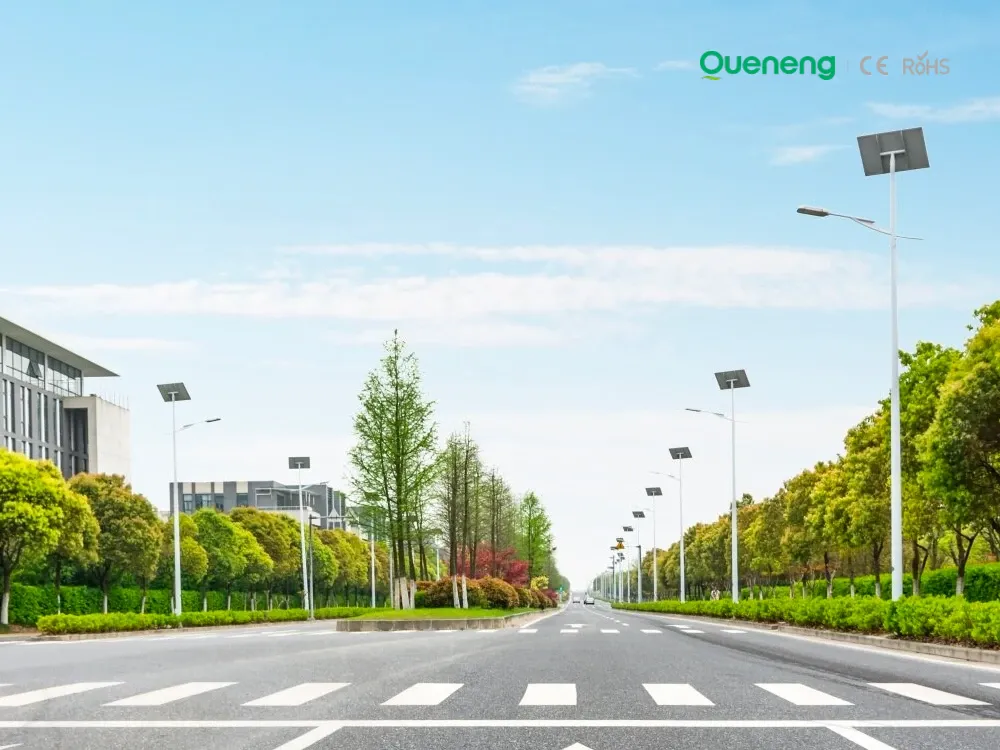
In recent years, the purchase of solar streetlights for municipalities has become a growing trend across the globe. Local governments are under pressure to reduce public expenditure, promote green energy, and create safer communities. Solar streetlights provide a reliable, cost-effective, and sustainable solution that meets these needs. Queneng Lighting, as a leading solar street lighting manufacturer, has supported multiple municipal projects worldwide with customized and energy-efficient solutions.
FAQ
Solar Street Light Luhao
How long does it take to install the Luhao solar street light?
Installation of the Luhao solar street light is quick and easy. It typically takes only a few hours to install the light, and no electrical wiring is required, making it a straightforward solution for both residential and commercial use.
Battery Performance and Testing
What is the standard charge retention test?
After the battery is discharged to 1.0V at 0.2C, it is charged at 0.1C for 16 hours, stored at a temperature of 20℃±5℃ and a humidity of 65%±20% for 28 days, and then discharged to 1.0V at 0.2C. NiMH batteries should last longer than 3 hours.
The national standard stipulates that the standard charge retention test of lithium batteries is: (IEC has no relevant standards) The battery is discharged to 3.0/unit at 0.2C, and then charged to 4.2V at 1C constant current and constant voltage, with a cut-off current of 10mA, at a temperature of 20 ℃±5℃, after 28 days of storage, discharge at 0.2C to 2.75V, calculate the discharge capacity, and compare it with the battery's nominal capacity, it should not be less than 85% of the initial capacity.
Transportation and Highways
Can the lights be relocated if the road layout changes?
Yes, solar lights are highly flexible and can be easily relocated without the need for re-wiring.
Industry
Do Queneng’s solar street lights have anti-theft protection?
Our solar street lights are designed with security features, including durable casings and anti-theft bolts, minimizing the risk of theft.
How long is the expected lifespan of Queneng’s solar lighting system?
Under normal maintenance, our solar lighting systems can last over 10 years. High-quality materials and advanced technology contribute to their long-lasting durability and reliability.
Solar Street Light Lufei
Are solar street lights suitable for installation in urban areas?
Yes, solar street lights are ideal for both urban and rural installations. In urban areas, they help reduce electricity costs and carbon emissions while providing reliable illumination in parks, streets, and other public spaces.


Queneng's Luzhou Solar Street Light provides sustainable, energy-efficient outdoor LED lighting. Powered by solar energy, it's a cost-effective and eco-friendly solution for illuminating streets and pathways. A reliable and durable LED solar street light.

The Solar Streetlights of Luhao for Municipalities are designed to deliver reliable, energy-efficient, and cost-effective public lighting solutions. Equipped with advanced LED technology, durable lithium batteries, and high-efficiency solar panels, these streetlights provide consistent illumination for roads, parks, residential areas, and government projects.


Queneng's Lufei Solar Street Light offers durable, energy-efficient outdoor lighting solutions. This solar-powered street light provides reliable illumination, reducing energy costs and environmental impact. Ideal for outdoor spaces, Lufei ensures safety and security.

Queneng’s Solar Street Lights are designed to provide reliable, energy-efficient lighting for streets, parks, and other outdoor spaces.
Our professional team is ready to answer any questions and provide personalized support for your project.
You can reach us via phone or email to learn more about Queneng’s solar lighting solutions. We look forward to working with you to promote clean energy solutions!
Rest assured that your privacy is important to us, and all information provided will be handled with the utmost confidentiality.
By clicking 'Send Inquiry Now' I agree to Queneng processing my personal data.
To see how to withdraw your consent, how to control your personal data and how we process it, please see our Privacy Policy and Terms of use.
Schedule a Meeting

Book a date and time that is convenient for you and conduct the session in advance.
Have more questions about our products or services?

